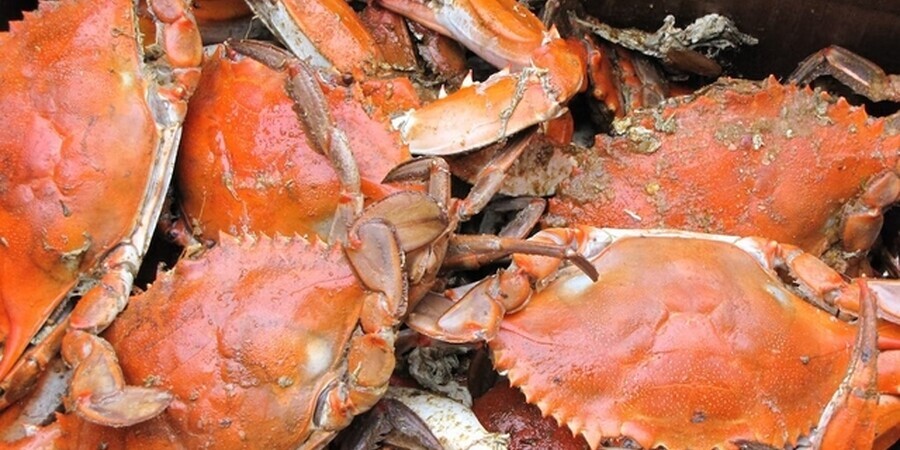MARYLAND - Maryland and blue crabs are synonymous. The Chesapeake Bay, the nation's largest estuary, provides the perfect habitat for these iconic crustaceans, making Maryland a prime destination for crabbing enthusiasts. Whether you're a seasoned crabber or a curious beginner, the thrill of pulling up a trap or line laden with feisty blue crabs is a quintessential Maryland experience. This guide will help you discover some of the best public spots across the state to try your hand at catching your own delicious bounty.
Maryland's Blue Bounty: A Guide to the Best Crabbing Spots in the Old Line State
Remember to always check the latest Maryland Department of Natural Resources (DNR) regulations for licensing, size limits, and season dates before heading out.
Top Public Crabbing Spots in Maryland:
Bill Burton Fishing Pier State Park (Cambridge & Trappe, Dorchester & Talbot Counties)
- Why it's Great: This park features two lighted fishing piers, which are the old US Route 50 bridge spans, providing extensive access over the Choptank River. It's one of the most popular crabbing piers in the state.
- What to Expect: Good for both recreational crabbing and fishing. The pier is accessible 24/7, and no fishing or crabbing license is required on the dock itself (though regulations on catch still apply).
- Tip: It can get crowded, especially on weekends.
Point Lookout State Park (Scotland, St. Mary's County)
- Why it's Great: Located at the confluence of the Chesapeake Bay and the Potomac River, Point Lookout offers diverse crabbing opportunities from its causeway, fishing pier, and rental boats.
- What to Expect: Beautiful scenery and a chance to catch blue crabs in a historic area. The park also offers camping, swimming, and hiking.
- Tip: A Maryland Chesapeake Bay & Coastal Sport Fishing License may be required depending on the exact location and method within the park.
Jonas Green Park (Annapolis, Anne Arundel County)
- Why it's Great: This park features a popular crabbing and fishing pier on the Severn River, with stunning views of the Naval Academy Bridge. It's easily accessible and family-friendly.
- What to Expect: A dedicated crabbing pier that can get busy. Good spot for using crab pots or hand lines.
- Tip: Parking can be limited during peak times.
Romancoke Fishing Pier (Stevensville, Queen Anne's County)
- Why it's Great: Located on the Eastern Shore on Kent Island, the Romancoke Pier extends into Eastern Bay, offering good access for crabbing.
- What to Expect: A popular spot for both crabbing and fishing, with views of the Chesapeake Bay.
- Tip: Check local tide charts, as crabbing can often be better during incoming or outgoing tides.
Northside Park (Ocean City, Worcester County)
- Why it's Great: While Ocean City is known for its ocean beaches, Northside Park on Assawoman Bay (125th Street) has a popular crabbing and fishing pier offering a calmer, bayside experience.
- What to Expect: Great for families. The park also features playgrounds, walking paths, and other amenities.
- Tip: Good for hand lines and collapsible traps.
Public Piers in Various Coastal Towns
- Why it's Great: Many of Maryland's charming coastal towns along the Chesapeake Bay and its tributaries (like St. Michaels, Crisfield, Rock Hall) have public piers, bulkheads, or designated areas where recreational crabbing is permitted.
- What to Expect: Local knowledge is key here; ask at local bait and tackle shops for recommendations.
- Tip: Always ensure you are in a public access area and are aware of local ordinances.
Essential Tips for Maryland Crabbing
- Get Licensed: Unless crabbing from a designated license-free fishing area (like some public piers), individuals 16 and older generally need a Maryland Chesapeake Bay & Coastal Sport Fishing License.
- Know the Regulations: Familiarize yourself with Maryland's crabbing regulations regarding size limits (minimums for hard crabs, peeler crabs, and soft crabs), daily catch limits, and restrictions on keeping female crabs (especially sponge crabs). These are strictly enforced.
- Best Time to Crab: The crabbing season typically runs from April to mid-December. Summer and early fall (May through October) are generally the most productive months. Crabs are often more active during incoming or slack tides.
- Bait: Chicken necks are the classic and most popular bait, but fish heads (like menhaden or alewife) can also be effective.
- Equipment: Common methods include hand lines with bait, collapsible traps, dip nets, and crab pots (note: regulations for crab pots can be more extensive).
- Be Prepared: Bring sunscreen, a hat, water, a cooler to store your catch, and gloves (crabs can pinch!).
 Crabbing in Maryland is more than just a way to catch a delicious meal; it's a cherished tradition and a fantastic way to connect with the natural beauty of the Chesapeake Bay and its tributaries. By choosing a good location, understanding the regulations, and using the proper techniques, you can enjoy a fun and rewarding crabbing adventure in the Old Line State. Happy crabbing!
Crabbing in Maryland is more than just a way to catch a delicious meal; it's a cherished tradition and a fantastic way to connect with the natural beauty of the Chesapeake Bay and its tributaries. By choosing a good location, understanding the regulations, and using the proper techniques, you can enjoy a fun and rewarding crabbing adventure in the Old Line State. Happy crabbing!
Sources:
- Maryland Department of Natural Resources (DNR) Website (for licenses, regulations, and public access sites)
- Maryland State Parks Website
- County Parks and Recreation Websites (Anne Arundel, Queen Anne's, St. Mary's, etc.)
- Local bait and tackle shops, Maryland Tourism Office (VisitMaryland.org)


